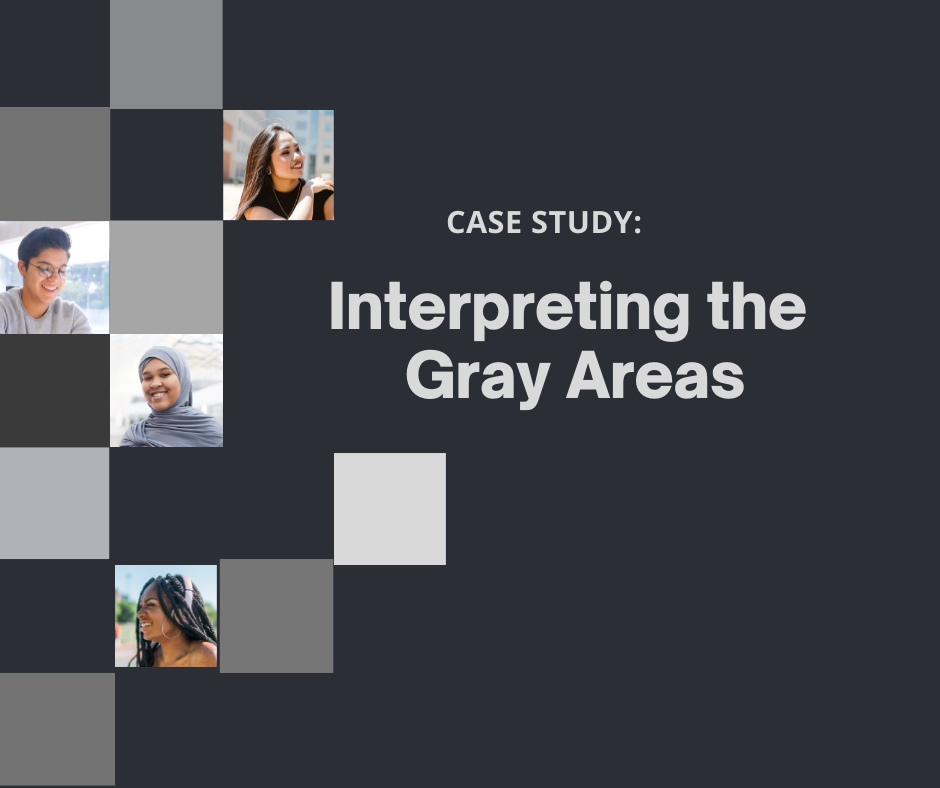
Case Study: PartnerSource Helps Interpret Gray Areas
Have you experienced a situation where an employee injury is so unique that it’s challenging to determine how the injury benefit plan applies in that specific set of facts?
For more than 30 years, PartnerSource has designed custom plans for clients and consulted on claim decisions when plan questions arise. Despite the level of detail included in these custom plans, it’s impossible for every claim scenario to be contemplated, creating gray areas that need to be interpreted by the plan fiduciary. This can seem like a daunting task, magnified by the understanding that the injured employee is impacted by the decision.
However, PartnerSource has demonstrated that by approaching any seemingly gray area with a few key things in mind, employers can feel confident the plan is being applied appropriately and fairly:
First, look to the language in the plan definitions for guidance. Although definitions between plans may differ, the below definition of Course and Scope of Employment part (c), listed below, is a good example:
1.10 "Course and Scope of Employment" means an activity of any kind or character for which the Participant was hired and that has to do with, and originates in, the work, business, trade or profession of an Employer, and that is performed by a Participant in the furtherance of the affairs or business of an Employer. The term includes activities conducted on the premises of an Employer or at other locations designated by an Employer. This term does not include:
(c) any injury occurring before the Participant clocks in or otherwise begins work for an Employer, while on a permitted work break, or after the Participant clocks out or otherwise ceases work for an Employer, unless:
(1) the injury occurs while the Participant is on the Employer’s premises (or other area for which an Employer is responsible for maintenance); and
(2) such injury is not otherwise excluded under the personal property or personal deviation exclusions referenced under subsections (d) and (e) below.
(d) any injury that results from personal property that does not originate in the Employer’s workplace and is not specifically required for the Participant’s work activities.
(e) any injury that results from personal errands or similar personal deviations from the Participant’s work activities, as determined by the Claims Administrator.
In reading this definition, we know that coverage does not normally apply unless a participant is clocked in and working. However, there are a couple of exceptions that require you find out where and how the injury occurred. For example, was it on the employer’s premises (or premises they maintain), or was it caused by personal property or deviation by the participant? This makes reading the plan and its relevant definitions the first place to start in guiding the investigation.
PartnerSource references prior decisions in similar circumstances. ERISA directs us to administer the injury benefit plan consistently. To that end, it is important to reference prior similar decisions as a guide. Prior claims are a guide, but do consider how the facts are both similar and different. Are the facts the same such that the decision should be consistent or are there differences that set each case apart, perhaps leading to a different decision? One tool that can be useful in referencing prior decisions is maintaining a "decision log" where a brief summary of the facts and the ultimate decision is stored in one central document. This is a very useful tool, especially when there are multiple decision makers or turnover in staff that make consistency challenging. Keeping this level of detail readily available is yet another way in which PartnerSource sets itself apart.
PartnerSource understands the gray area, and is ready to work with you on it. When in doubt, reach out to your PartnerSource team. If you are a client, your PartnerSource director, claim manager, or team leader are all good resources. If you are not yet using PartnerSource, you should know that our team provides decision support many times daily so we’ve probably seen a similar situation and can provide guidance that will ensure ERISA compliance while considering overall strategy for the best outcome.
PartnerSource experts stand ready to help interpret gray areas and empower clients to get the best outcomes possible for their injured employees. Questions about how this applies to you? Contact your PartnerSource team leader or Jennifer Hurless.
